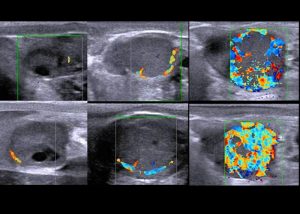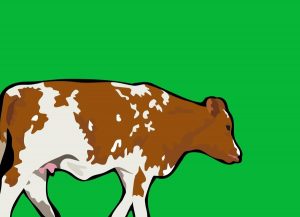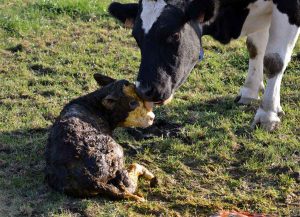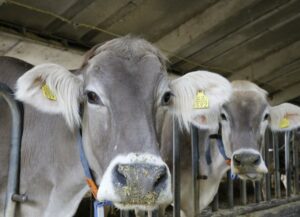Maria Villagrasa & Nuria Garcia
Cow fertility plays an important role in the productivity of dairy cow herds. Gestation losses during the late embryonic and early fetal phases are among the leading causes of infertility in dairy cows and a crucial factor for farm economy.
Embryonic losses are classified as early or late before and after day 25, respectively; the average rate of late embryonic loss is 10-12%, but this figure varies widely between farms and ranges from 3.5% to 26.3%.
Different risk factors have been observed that can lead to gestation losses: parity —such that multiparous have more gestation losses than primiparous cows—, the progesterone concentration at the time of artificial insemination (AI) and during the first days of gestation, the serum concentration of glycoproteins associated with gestation, the intensity of the estrus, the warm or cold season during AI, the protocol for fixed-time AI, etc.
There are other factors that are not associated with gestation losses, such as number of inseminations —first, second and subsequent AI—, prolonged lactations, interval between delivery and AI, etc. This information however is contradictory.
Considering these observations, it is generally accepted that gestation losses in high-production dairy cows is multifactorial, the underlying mechanisms however remain unknown. It is necessary to collect more information on this topic, and elucidate the complicating factors and phases of the gestation, including a large number of gestations to guide management strategies and improve reproductive efficiency in dairy farms.
A retrospective observational study (Fernandez-Novo et al., 2020) was conducted to examine, in a large sample of gestations in high-production dairy cows, the relationship between the prevalence of gestation losses (between 28-110 days of gestation) and its relationship to the various factors: farm, year (2015-2018), season (cold, warm), number of inseminations, number of births, type of AI (fixed-time vs AI after heat observation), loss of a prior gestation, days in milk (DIM), fixed-time AI protocol, AI technician, bull and semen type (sexed vs. conventional).
The study included a total of 19,437 AI of cows and heifers (Holsteins), carried out during the period 2015-2018, of eight farms in Spain with intensive management.
Gestation losses are more frequent in multiparous cows than primiparous
An overall gestation loss of 12.3 % was found out of a total of 6,696 gestations diagnosed after a first gestation with less than 110 days (between 28 and 110 days after AI).
A loss rate of 11.9% was observed during the cold season and 13.9% during the warm season, although these data were not significant in this study.
With regards to the number of inseminations, a loss of 13.8% was detected for first AI- gestations of 11.1% for second AI and 11.8% for the third and subsequent AI.
Heifers showed fewer losses (6.9%), followed by primiparous cows (10.8%), while multiparous cows showed the highest rate of losses (15.3%). The type of AI was associated with gestation losses so that gestations achieved by AI after an observed heat and bull service were associated with less losses than fixed-time AI (11.9% vs 12.7%). A similar result was observed when segmenting data for each reproductive strategy and considering only those of heifers: the rate of loss per protocol was 0.5% for bull service, 7.7% for AI following heat observation, and 40% for fixed-time AI.
Another analysis was performed only with cows (5,408 total pregnancies) to consider DIM, which indicated that this variable did not influence losses. Factors not provided by all farms, such as the AI technician and the type of semen used, were later added. In this model, neither the AI technician nor the type of semen were associated with losses, so that losses after 3,141 gestations with sexed semen were 8.1%, while with conventional semen 14.3%.
With regards to the history of gestation losses, having had a previous loss during lactation, tended to reduce the probability of losing the gestation again during the same lactation (12.5% vs 9.5% losses for cows without and with history of loss, respectively).
On the other hand, the year was strongly associated with gestation loss with a declining rate over time (18.9% in 2015 to 9.2% in 2018). It appears that an improvement in reproductive management in general may also be associated with this reduction.
Conclusions
The most relevant findings of the study were:
- Gestation losswas more common in primiparous and multiparous than in heifers
- Gestations achieved with AI after heat observation and natural mount were associated with fewerlosses than those achieved after fixed-timeAI
- First AI was related to higher lossrates than second or subsequent AI
- Year, fixed-time AIprotocol, days in milk, bull
- AI technician or type of semen did not influence losses
As a result, farmers may decide to re-inseminate cows that suffered previous losses and must adapt their preventive loss strategies to parity.
Reference
Aitor Fernandez-Novo, Octavi Fargas, Juan Manuel Loste, Francisco Sebastian, Natividad Perez-Villalobos, Jose Luis Pesantez-Pacheco, Raquel Patron-Collantes and Susana Astiz. Pregnancy Loss (28–110 Days of Pregnancy) in Holstein Cows: A Retrospective Study. Animals 2020, 10, 925.
© 2020 Dairy Knowledge Center. All Rights Reserved.









